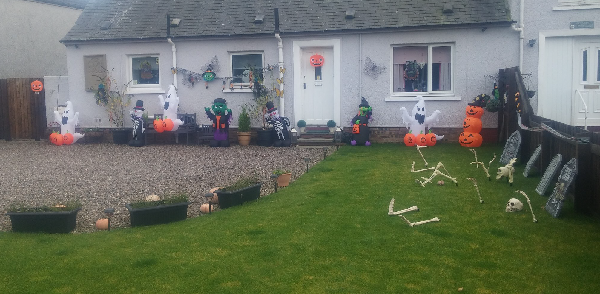31st October Hallowe'en / All Hallowtide
At the end of October is All Hallow's Eve, when the dead walk the earth before All Saint's Day on the 1st of November. Unrelated to Hallowe'en is the Mexican Day of the Dead, which also falls in October.
Thought to have evolved from Samhaim, the Pagan Festival of the Dead on 1st November, marking the start of winter. All Hallow's Eve/All Hallowtide meant that bells would be rung joyfully in advance of the sombre tolling of All Saints' Day. The significance of the date itself in history is of the bell ringing on the night before and after All Hallow's Day/All Saint's Day (1st Nov).
From 16th - 19th centuries in Lancashire and Derbyshire there are scattered references to midnight vigils, by small bonfires in the open countryside, one account dated 1658 states:
 Halloween at Kinross, Scotland 2016
Halloween at Kinross, Scotland 2016There is little said about Halloween in English folklore - and most quotations come from Scotland, many of them in Victorian times when Scotland and Scottish traditions were fashionable.
Apples and nuts, being seasonable, feature strongly in Halloween customs, such as apple bobbing and apples on a string. Scottish children went from house to house disguised; whereas their English counterparts held parties indoors.
The Jack o' Lantern was carved from turnips and lit with a candle.
Although the house visits have been popular in Scotland for many decades, it is only comparitively recently that the American phrase "trick or treat" has been adopted in the UK, with the increasing popularity of this event.
| Latest Trends | Ordering Information | debbie@silkpixie.com | Delivery & Returns |


